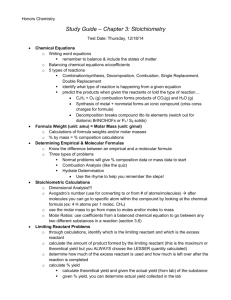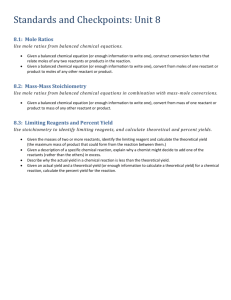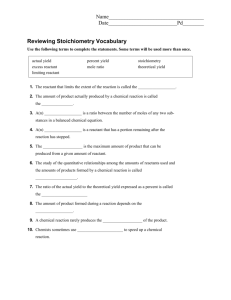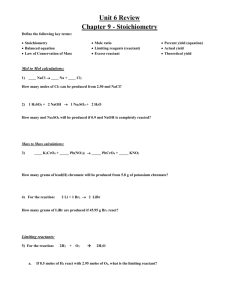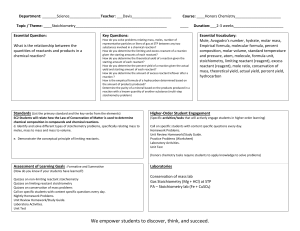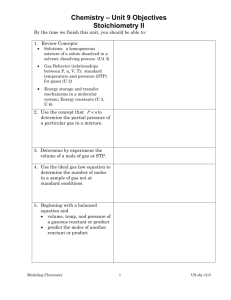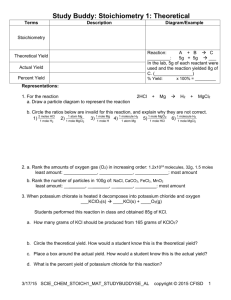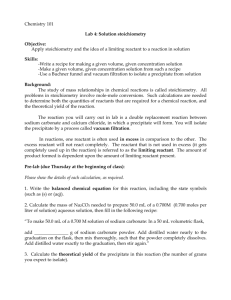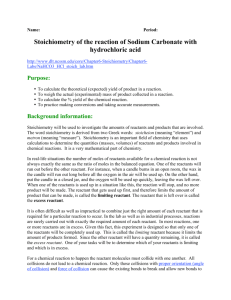Limiting Reactant/Reagent Problems: - Dr. Vernon-
advertisement
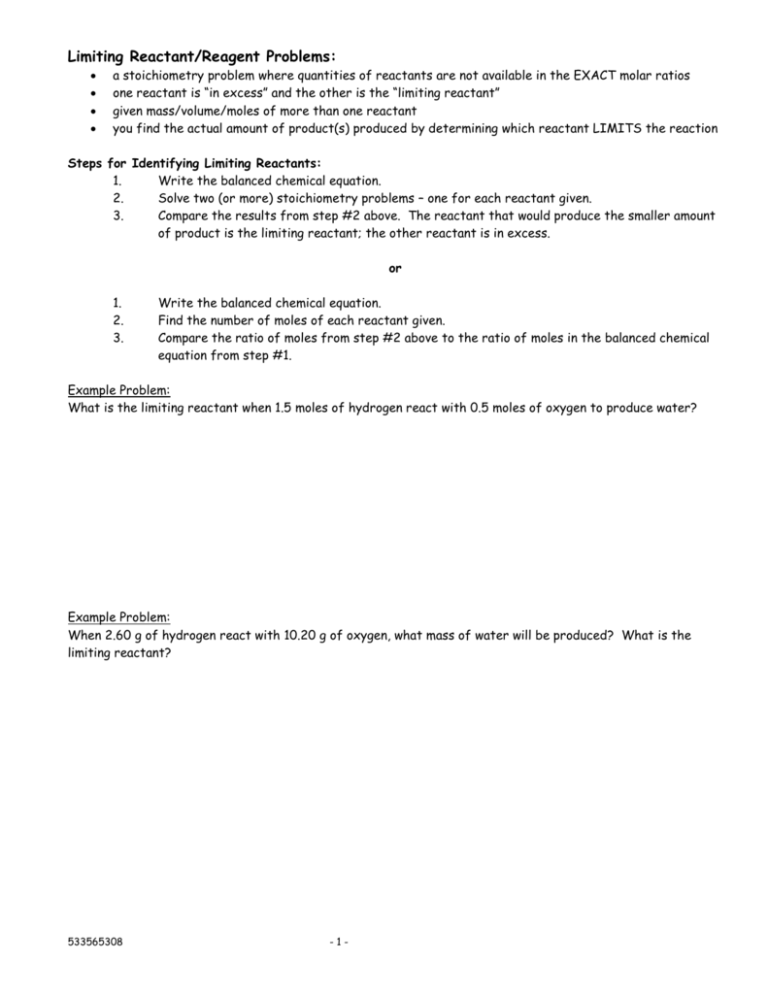
Limiting Reactant/Reagent Problems: a stoichiometry problem where quantities of reactants are not available in the EXACT molar ratios one reactant is “in excess” and the other is the “limiting reactant” given mass/volume/moles of more than one reactant you find the actual amount of product(s) produced by determining which reactant LIMITS the reaction Steps for Identifying Limiting Reactants: 1. Write the balanced chemical equation. 2. Solve two (or more) stoichiometry problems – one for each reactant given. 3. Compare the results from step #2 above. The reactant that would produce the smaller amount of product is the limiting reactant; the other reactant is in excess. or 1. 2. 3. Write the balanced chemical equation. Find the number of moles of each reactant given. Compare the ratio of moles from step #2 above to the ratio of moles in the balanced chemical equation from step #1. Example Problem: What is the limiting reactant when 1.5 moles of hydrogen react with 0.5 moles of oxygen to produce water? Example Problem: When 2.60 g of hydrogen react with 10.20 g of oxygen, what mass of water will be produced? What is the limiting reactant? 533565308 -1- Percent Yield Problems the amount of product produced from a reaction based on a calculation is the expected yield the amount of product that is really obtained during the reaction (in a lab or industrial setting) is the actual yield reasons for differences between actual and expected yield: 1. some reactants didn’t fully react 2. there were side reactions that differ from the reaction on which the expected yield was based 3. some product was lost during recovery or transfer it is useful to determine what percent of the expected yield was actually obtained percent yield = actual yield expected yield x 100% Example Problem: A reaction occurs between 500.0 g of carbon disulfide and an excess amount of oxygen gas. The mass of sulfur dioxide produced is 768 g. What is the percent yield for this reaction? Step 1. Write the balanced chemical equation. Step 2. Determine the expected yield using stoichiometry Step 3. Compare the actual yield to the expected yield using the percent yield equation. 533565308 -2-

